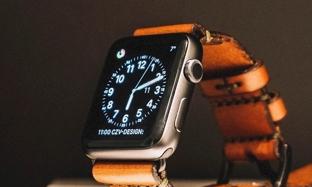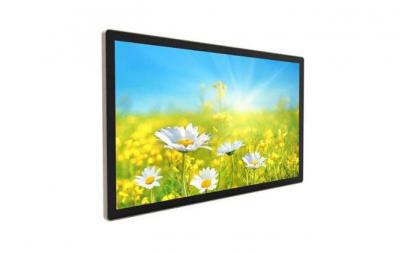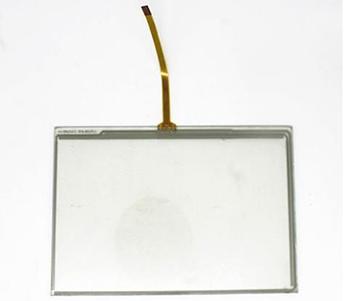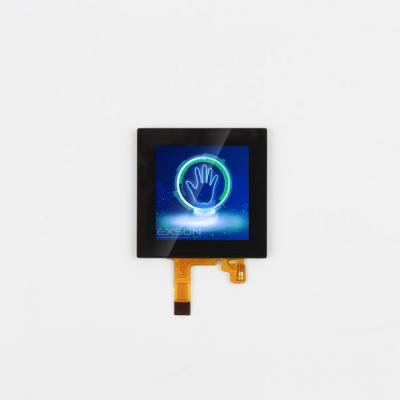TFT displays with MCU interface generally have an interface with the "TE" signal. The TE signal is an output interface that can provide normal display even without being connected to the MCU.
The TE (Tearing Effect Signal) is a feedback signal from the TFT controller to the MCU. Its function is similar to the FLM (First Line Marker) signal of the past liquid crystal module of monochrome style.
The TE signal is sent from the TFT controller to tell the MCU that it is "starting" to read RAM from the first line and display it. The goal is to avoid conflicts caused by the TFT controller reading RAM data while the MCU is writing data to the same location, which often results in a garbled display.
Situation 1:
For high-speed MCUs with a frame rate of about 1/60 second, the MCU updates the display content of the entire frame faster than the display controller scans (reads) a frame. When the MCU sees the T signal, it starts updating (writing) the display content, and the relevant updates will not conflict with the display controller scanning (reading) RAM. Therefore, there will be no garbled display due to RAM read-write conflicts.
Note that the relevant update (writing) action starts just after the display controller scanning (reading) has just completed.
Situation 2:
For slower MCUs with a frame rate of about 1/60 second, the MCU updates the display content of the entire frame slower than the display controller scans (reads) a frame. When the MCU sees the TE signal, it starts updating the display content. As long as the MCU's updating speed does not exceed two frame times, it will not conflict with the display controller scanning (reading) RAM. Therefore, there will be no garbled display due to RAM read-write conflicts.
Note that the relevant update (writing) action starts just after the display controller scanning (reading) has just begun.
Exson provides touch and display integration solutions with OCA, OCR optical or air bonding to meet your specific needs. We also integrate driver boards with different inverters such as HDMI, VGA, Lvds-mipi, eDP-Lvds into integrated units.
We LCD display module supplier also support open framework design and manufacturing, including metal frame components, LVDS/ eDP/ FFC/ FPC/Ipex cables, and can provide custom cables according to requirements. If you need any other LCD parts and materials for support, our friendly team is more than happy to help.
 Reasons for Color Difference in TFT LCD ScreensMay 26, 2023Clients often ask us why there are color differences in the same model TFT LCD screens. Color difference in TFT LCD screens refers to the difference in color between two LCD screens of the same model ...view
Reasons for Color Difference in TFT LCD ScreensMay 26, 2023Clients often ask us why there are color differences in the same model TFT LCD screens. Color difference in TFT LCD screens refers to the difference in color between two LCD screens of the same model ...view Features and Working Principle of a Resistive LCDAugust 13, 2024Resistive LCD is an inductive liquid crystal display device capable of receiving input signals from contacts and other inputs. The resistive LCD locates the touch point through the pressure difference...view
Features and Working Principle of a Resistive LCDAugust 13, 2024Resistive LCD is an inductive liquid crystal display device capable of receiving input signals from contacts and other inputs. The resistive LCD locates the touch point through the pressure difference...view Navigating the Future: The Wonders of LCD Touch ScreensNovember 17, 2023In the ever-expanding landscape of interactive technology, LCD touch screens have become the unsung heroes, transforming the way we engage with our digital devices. From smartphones and tablets to int...view
Navigating the Future: The Wonders of LCD Touch ScreensNovember 17, 2023In the ever-expanding landscape of interactive technology, LCD touch screens have become the unsung heroes, transforming the way we engage with our digital devices. From smartphones and tablets to int...view What Characteristics Should Medical LCD Displays Have?August 13, 2024Medical LCD displays demand high resolution, usually above 1280*1024, to ensure that doctors can accurately identify and analyze anomalies in images. High-resolution medical LCD displays can provide c...view
What Characteristics Should Medical LCD Displays Have?August 13, 2024Medical LCD displays demand high resolution, usually above 1280*1024, to ensure that doctors can accurately identify and analyze anomalies in images. High-resolution medical LCD displays can provide c...view What Are the Advantages of Resistive Touch Screen?February 8, 2023Resistive touch screens were first invented in 1971 by Dr. Samuel G. Hurst. He calls the sensor the Elograph, after his company, Elographics.Ⅰ. What is a resistive touch screen?As the name suggests, ...view
What Are the Advantages of Resistive Touch Screen?February 8, 2023Resistive touch screens were first invented in 1971 by Dr. Samuel G. Hurst. He calls the sensor the Elograph, after his company, Elographics.Ⅰ. What is a resistive touch screen?As the name suggests, ...view Analysis of LCD SPI Screen Flicker PhenomenonMay 26, 2023When we use display devices such as mobile phones, car displays, and home appliances, do we sometimes feel that there are lines scrolling up and down on the screen? Sometimes the screen even flickers?...view
Analysis of LCD SPI Screen Flicker PhenomenonMay 26, 2023When we use display devices such as mobile phones, car displays, and home appliances, do we sometimes feel that there are lines scrolling up and down on the screen? Sometimes the screen even flickers?...view Call us on:
Call us on:  Email Us:
Email Us:  2F-M1 XiaWei Industrial Park, GuanLan, LongHua District, SZ, China
2F-M1 XiaWei Industrial Park, GuanLan, LongHua District, SZ, China